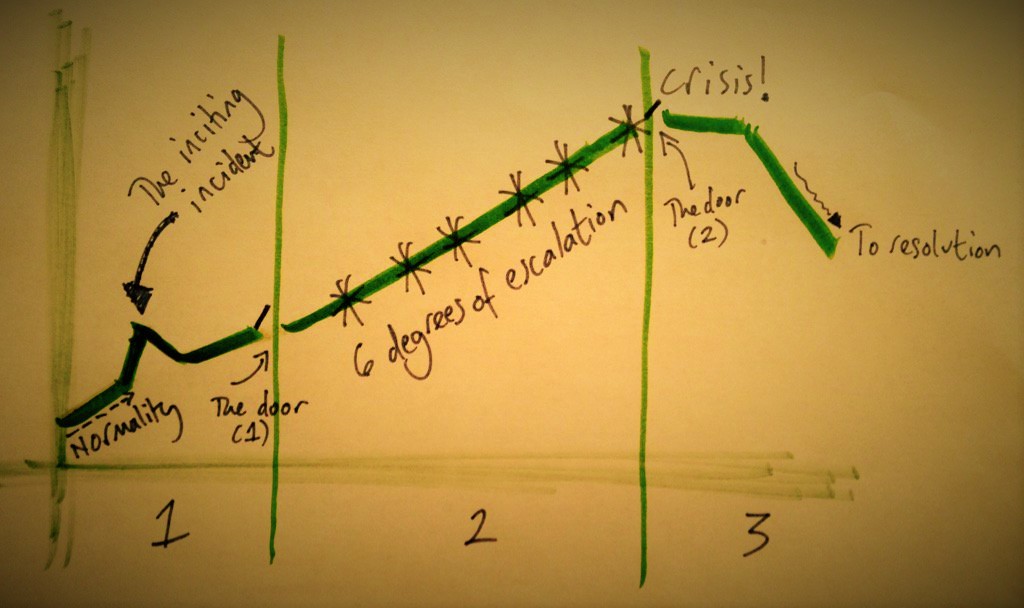 This is the last of three posts that cover my current thinking on narrative structure. I don’t claim to be an expert, and this is more for my benefit than it is for anyone else’s I guess, but it’s the combination of maybe five or six books on the matter as well as countless balls-ups and rewrites, and as such it might prove useful. First, watch Sam Raimi’s wonderful thriller A Simple Plan, and pause at 1:15:00. So here we are at gate 2. I like the way Donald Maass discusses crisis. Here’s what he says in Writing 21st Century Fiction: “Let your main character fail. Exhaust every option, block every path, alienate every ally, and defeat your protagonist in fact and in spirit.” It’s pretty raw, but that’s Maass all over; he’s the supreme raise-the-stakes-even-higher! guy. Blake Synder is equally as forceful. He encourages us to present, “…total defeat. All aspects of the hero’s life are a shambles. Wreckage abounds. No hope.” Synder goes on to say – in movie terms – that the following 5 seconds to five minutes of film should dwell on this disaster in a sort of ‘dark night of the soul,’ before our protagonist makes an irreversible decision that moves them into act three. (Often the nature of this decision is kept from the reader. Dialogue is missed out in this manner; “So I told him what I was going to do. I laid it out in every detail. When I’d finished, he looked up, blinked and said, “You’re crazy. It’ll never work.””) In A Simple Plan, the FBI show up. At least it looks that way; Raimi raises the stakes by questioning the identity of the new character. And we end up where we started – in a snow-choked woodland clearing where our final tragedy plays out. Do we need the scene at the fireplace? I’m not sure. The Of Mice and Men bit strikes me as the most fitting conclusion, right? Do we need the crime-doesn’t-pay moralising? I thought we covered that during the inciting incident in act one when Hank says, “You work for the American Dream. You don’t steal it.” Nevertheless, a great movie, a superb story, and an object lesson in structure. Seven books I own - and would recommend - on story structure: Donald Maass Writing the Breakout Novel Donald Masss Writing 21st Century Fiction James Scott Bell Plot and Structure Blake Snyder Save the Cat! Jerome Stern Making Shapely Fiction Ronald B Tobias 20 Master Plots and How to Build Them Christopher Vogler The Writer’s Journey John Yorke Into The Woods Comments are closed.
|
Archives
November 2021
Categories |
 RSS Feed
RSS Feed